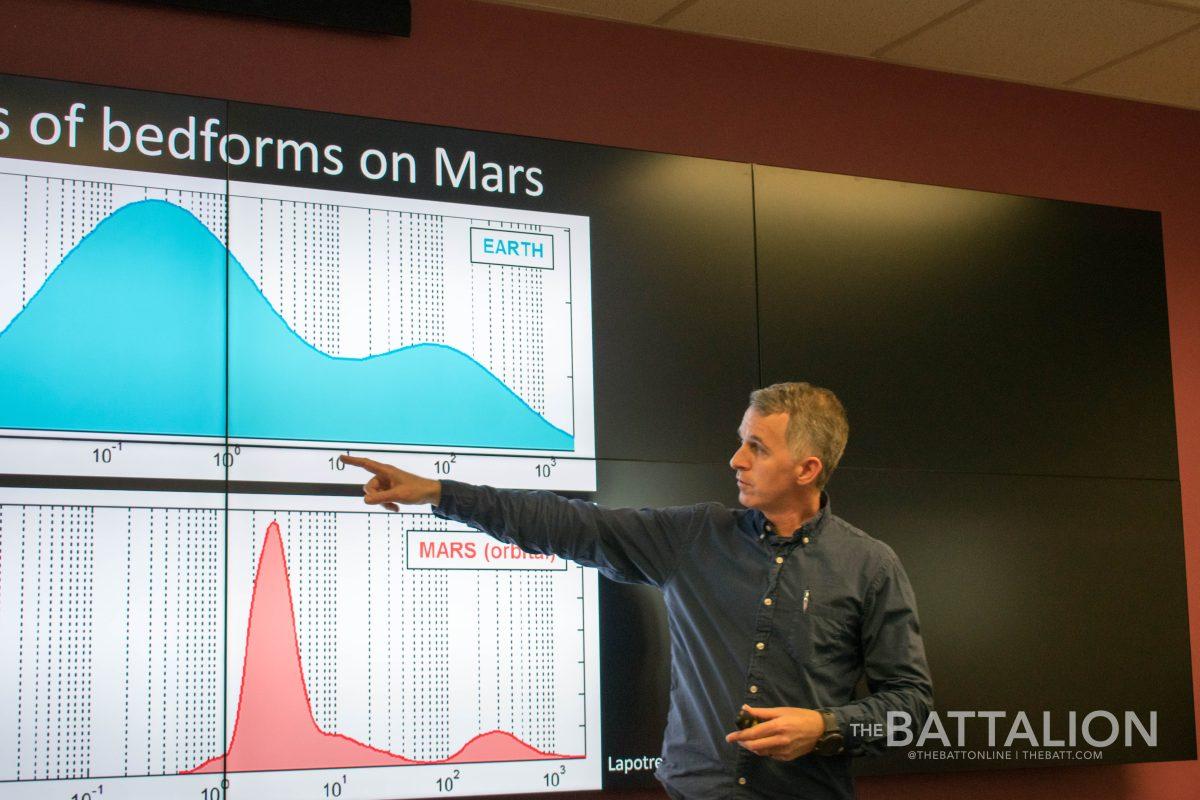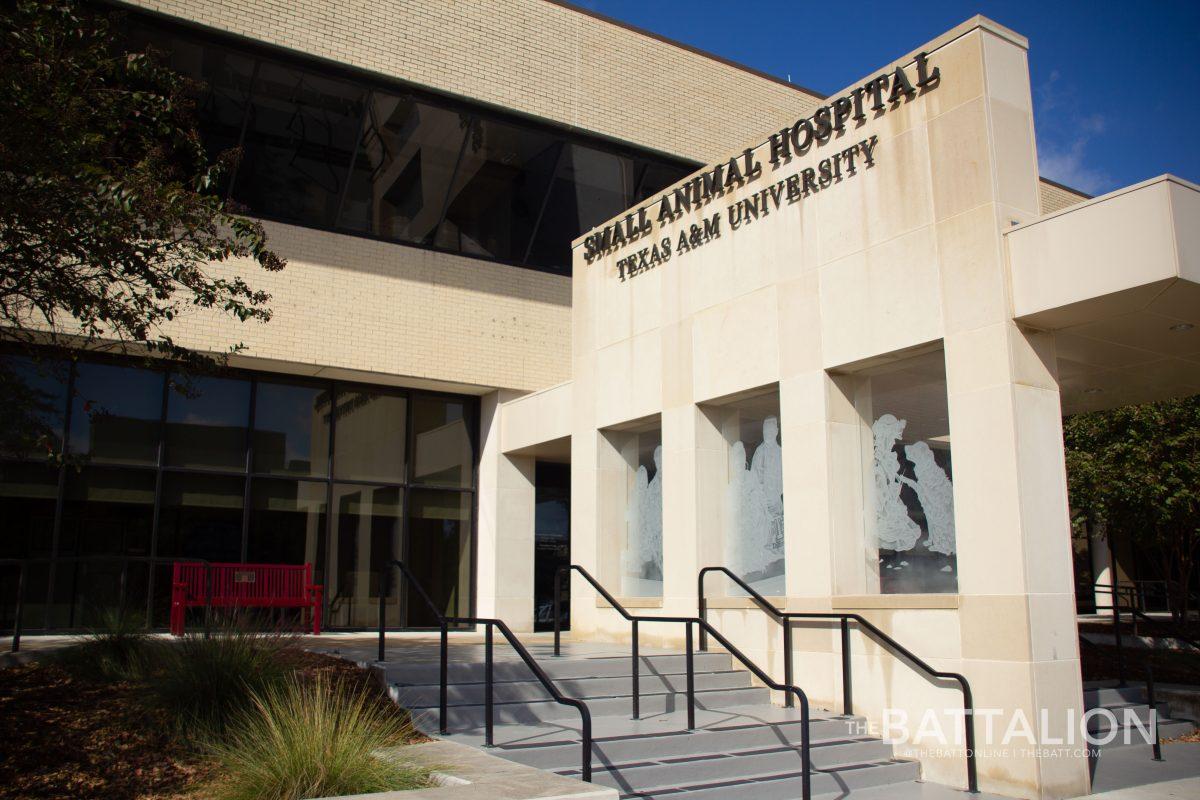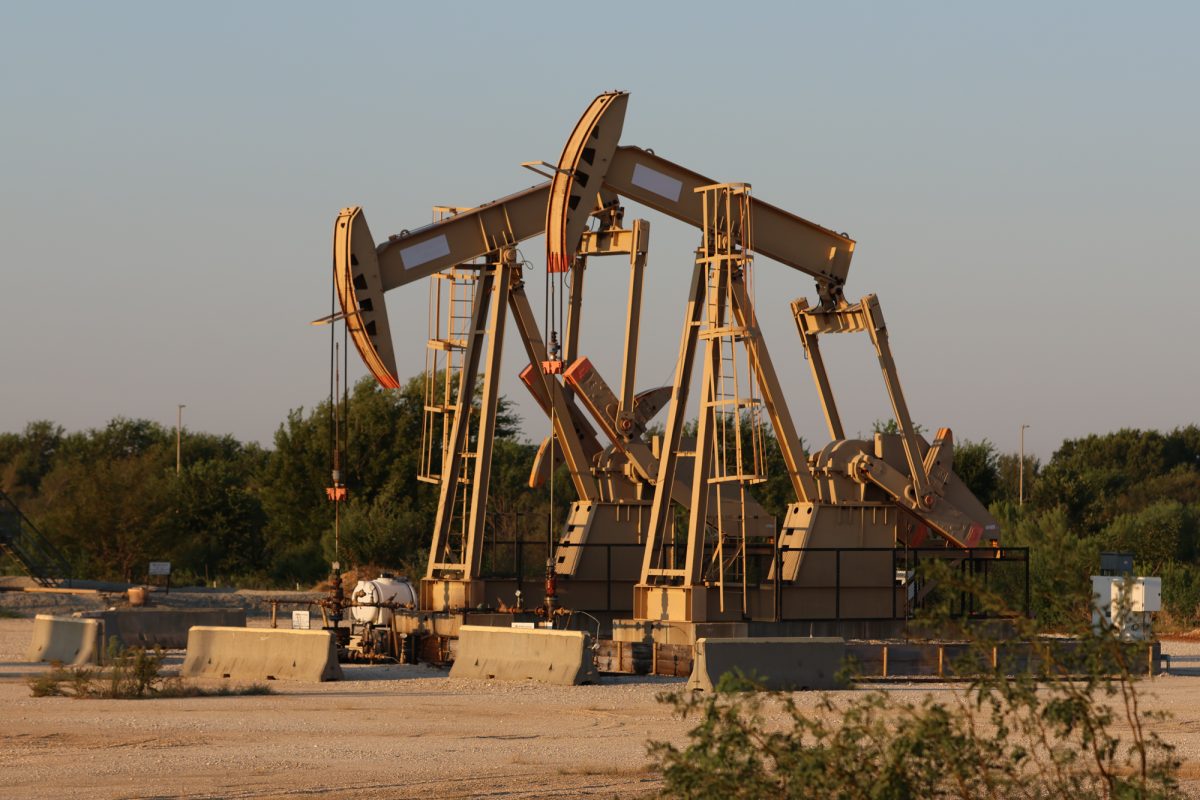In a lecture given in the Eller O&M building, a Texas A&M professor who worked on the Mars rover discussed why multidisciplinary teams of scientists are necessary for successful space exploration and research.
Ryan Ewing, associate geology professor, worked on the Mars Science Laboratory Curiosity rover team from 2013 to 2016. Ewing’s presentation focused on discoveries he made during his time on the project. During that time, he focused on the dynamics of sand dunes and how they can be modeled and compared with sand dunes on Earth.
Ewing said that unlike earth dunes, the driving for sand dune migration is not wind, nor is it due to interactions between the sand grains. According to Ewing, the behavior of sand dunes on Mars more closely resembles sand dune behavior in an aqueous body.
“So really what we have are something that we have not seen on Earth, and the question is ‘Can we explain it with an Earth based process,’” Ewing said. “So now … [our measurements] show the wavelengths of the floor, and maybe these are akin to some aqueous ripples. They don’t really change shape or wavelength across the entire width of a dune.”
According to Ewing, this discovery strongly supports existing facts about ancient lakes or oceans on the surface of Mars and allows insight into the change in depth across time.
While working on the Curiosity rover, Ewing helped develop and map terrain reading, which were then used to plot more efficient routes for the rover’s travel.
“I participated for three years … as a surface properties scientist,” Ewing said. “That involved being the backseat geologist for engineers that were doing path planning. The reason that position came about … was when the rovers were getting stuck, it became apparent that a lot of the engineers hadn’t been out in the field enough to read the topography like the geologist could … they planted the geologist with the engineers to decide where the rover should go.”
At the end of his presentation, Ewing said the various developments in the private space sector can be utilized to map planets in the future. He also reminded his audience that the observation satellite “Geosat” could provide relevant data to other areas of space research.
“All things spacial that are being done for ground and orbital observation on Mars … are related to what we can do here,” Ewing said. “There are an enormous number of programs that all of us could fit in to. It doesn’t have to be that you’re developing a huge instrument … you could develop something small, and [companies] will consider it.”
The lecture was attended by students, professors and researchers, such as Leo Hartman, 20 year veteran of the Canadian Space Agency.
Hartman said he came to the presentation specifically to learn about Ewing’s research. He added that in projects such as these, budgets should be set to prioritize communication.
“Roughly 50 percent of the budget of these projects is spent on information systems,” Hartman said. “Something that would greatly improve the efficiency of these projects would be greater cooperation between interdisciplinary specialists.
Matthew Elliott, history sophomore, attended the lecture and said the chance to listen in on a discussion about space exploration was more than enough to convince him to attend.
“Even though I am a history major, I love Mars exploration,” Elliot said. “The close up photos of the Mars rover and sand dunes were particularly striking.”
Planetary geology helps guide space exploration
February 8, 2018
0
Donate to The Battalion
$2790
$5000
Contributed
Our Goal
Your donation will support the student journalists of Texas A&M University - College Station. Your contribution will allow us to purchase equipment and cover our annual website hosting costs, in addition to paying freelance staffers for their work, travel costs for coverage and more!
More to Discover










